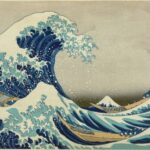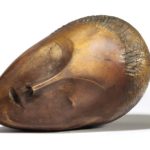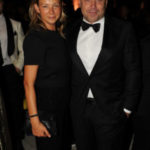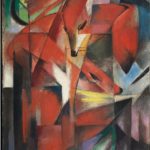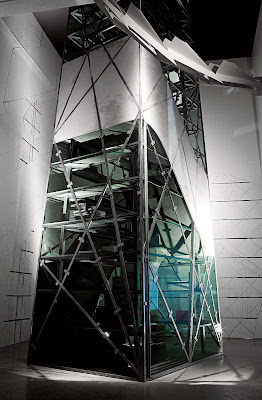From the Laboratory to the Living Room
Amid a clutch of young designers basing their work on scientific concepts, the questing Dutch polymath Joris Laarman is a standout
By Christine Soares
Scientists like to call evolution a blind designer. Nature never set out to make a dolphin, or a tree, or the human brain from primordial goo. The force of natural selection merely acted on the materials at hand, keeping what was working best. When conditions changed, selection favored the fittest traits for the new circumstances, and on and on, so that any living thing is optimized for this moment, but also just a snapshot in time of a never-ending process.
Early in his brief but prolific career, now thirty-year-old Joris Laarman became captivated by a fast-forward version of that process, the lifelong remodeling of human bone to adapt to the body’s changing needs. Surfing the Web in 2004, he discovered the work of a German engineering professor with a software simulation of the way bones grow by continuously adding and pruning material. The program was developed for the car industry to optimize the strength of lightweight materials. Laarman wanted to see how it would structure a chair when nothing was predetermined but the seat and back positions, load requirement, and material.
The organic elegance of the resulting “Bone” furniture series launched Laarman as one of the most exciting new designers amid a wave of young artists embracing scientific ideas and technological tools. A 2008 show on the theme at New York’s Museum of Modern Art, “Design and the Elastic Mind,” featured the Bone furniture alongside pieces by artists whose work Laarman himself had been admiring at the time. “That show really felt like a homecoming,” he recalls.
The form of Laarman’s 2010 “Starlings” table (below) derives from a computer animation (above of a swooping flock of the birds.
The form of Laarman’s 2010 “Starlings” table (below) derives from a computer animation (above) of a swooping flock of the birds.
Many of Laarman’s newer pieces have the same feeling of capturing snapshots of a living process. Perhaps none more so than the “Starlings” table exhibited this spring in Laarman’s firsts U.S. solo show at New York’s Friedman Benda gallery. A twisting black mass balanced on three points, the form was derived in multiple steps from a computer animation of a dipping, swooping swarm of twenty-five thousand starlings. Incredibly dense and delicate at once, the table looks as though it could take off at any moment if startled.
“We wanted to make things that were like frozen particle systems,” Laarman says. The “we” refers to a coterie of young designers, programmers, and digitally adept kindred spirits Laarman has gathered in his Amsterdam studio, which he calls a laboratory. After scripting the animation, Laarman let it run and selected moments to freeze. Downloading a frozen frame into a different program allowed him to then painstakingly extend each of the birds’ wings to connect their tips. Still another program turned that file into a 3D polymer prototype, which Laarman then plated in nickel and polished by hand. “People don’t see how much work goes into it,” he says. “And each time you can do a different freeze, so it’s not an industrial process. Each piece is unique.”
Laarman’s “Leaf” table, detail at left, would appear to be astraightforward appropriation of natural motifs: rivulets of steel and aluminum that course over the resin top are clearly representative of the veining of a leaf. Yet, in fact, the table is a sly exploration of fractals—the mathematical concept of shapes that repeat endlessly at smaller and smaller scales in natural systems.
The boy can’t help it. Growing up in rural Holland, Laarman remembers always being drawn to science and technology “When I read the newspaper, I never read any stories about art and design, but I liked the science pages. I liked things that in my opinion were changing the future.” The arrival of the Internet made those ideas and the software to explore them accessible outside the locked laboratories of academia and industry. “This is something new, we have access to so much more information than just five years ago.”
All that digital information is evoked in Laarman’s grand “In Case of a Thousand Books,” a
twenty-five-foot tower of glass, steel, and wood. It encloses a zigzagging staircase and staggered shelves that offer enough space to hold the thousand printed books digitally contained in early-model e-readers. “The idea behind it was that nowadays we get e-readers that will eventually replace books,” Laarman says, “but digital information is something hard to grasp because it doesn’t need a shape.” Rather than intending a negative comment on the technology, Laarman says, “It’s more about the love of material. In the digital world, things are without material form. It’s kind of sad.”
At right is the towering form of Laarman’s “In Case of a Thousand Books,” 2010.
Right now Laarman is most enthusiastic about using robotics, “for finding new production methods that also bring with them a new form language, new shapes, and that are also more environmentally friendly and save a lot of nonsense.” Miniature chairs folded from a single sheet of metal by five robotic arms demonstrate the principle. “It could be a really revolutionary way of producing things. It’s like origami made in a little factory.”
Laarman even finds inspiration in the more dismal aspects of science. In a popular theory, fifty-year cycles of economic boom and bust called Kondratiev waves are sparked by the advent of a new technology. Every giddy peak is followed by a slow descent to depression, then an upswing of intense innovation that kicks off the next wave. For believers, we are now bottoming out from the fifth and final wave spawned by information technology. Whatever comes next is expected to bring a golden era in which technologies are no longer objects of fascination or alienation, but simply tools for exploring ideas and advancing humane ends. To a young man poised for this moment, “it’s a really exciting time to be a designer. We’re now at the end of the last wave and we are going down really fast,” Laarman says. “This is the time when really important breakthroughs start.”
Christine Soares is a New York writer and a former editor of Scientific American
[source: Modern Magazine]
